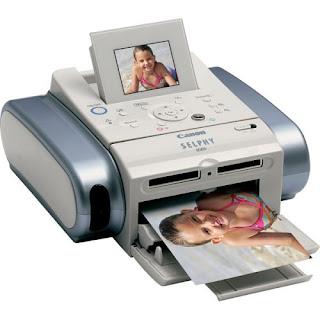7 Tips for Keeping Your Printer Heads Clean
 When the print quality of a desk jet printer degrades, the first response is to replace or refill the ink cartridge to ensure the presence of ink. If the printer was manufactured by Hewlett-Packard (HP), the printer head is part of the cartridge, and the problem has been resolved when the ink cartridge is replaced with a new cartridge. Other manufacturers build the print head into the printer itself, and the user can clean the print heads by following these tips.
When the print quality of a desk jet printer degrades, the first response is to replace or refill the ink cartridge to ensure the presence of ink. If the printer was manufactured by Hewlett-Packard (HP), the printer head is part of the cartridge, and the problem has been resolved when the ink cartridge is replaced with a new cartridge. Other manufacturers build the print head into the printer itself, and the user can clean the print heads by following these tips.1. Verify the presence of ink – Check the ink level in the cartridge by printing a test print page. If the page shows no sign of a particular colour, remove that cartridge from the printer and look for an indicator on the front of the cartridge that shows the ink level. No all print cartridges can be assessed visually. If you are confident that ink is in the cartridge, proceed through these steps. If you are not certain the cartridge contains ink, have the cartridge refilled or purchase a new cartridge.
2. Run printer head cleaning program – This procedure is well documented within the printer manual and also as a help entry within every version of Windows. Open the properties menu associated with the printer icon, and select the option to clean the print heads. Keep in mind that this procedure requires ink, and the extensive cleaning will require a great deal more ink. Dried ink will accumulate in the tiny holes of the print head when the printer sits idle for more than seven consecutive days. Check the frequency that this program is run automatically. If the printer is used infrequently, ensure that the printer is set to clean the print heads twice within a seven day period.
3. Use isopropyl alcohol – Obtain a small bottle of isopropyl alcohol from any drug store or pharmacy.
- Remove the print cartridge and use an eye dropper to place 7 to 10 drops in the receptacle below the printer cartridge bracket.
- Allow the alcohol to sit undisturbed for ten minutes prior to blotting it up with a cotton ball. You will notice the ink that is now in the cotton ball.
- Replace the ink cartridge and follow the prompts on the printer screen (if applicable).
- Run a print test page to get the ink flowing back through that print head.
- Print another document to see if the print quality has returned.
- This procedure can be repeated multiple times without damage to the printer.
5. Use high-quality paper – Printers vary in their pickiness concerning paper quality. Some designs loosen every particle of paper dust and cause those particles to be pulled into the printer during the print process. The moisture in the ink will attract the dust and clog the print heads. One way to prevent blocked printer heads is to use dust-free paper. The additional cost of paper may save ink and time when it comes to keeping the printer in working order.
6. Take printer to be repaired – Older printers are more prone to blocked printer heads, and the designs of the printers were much more complex just five years ago. If the print head is still blocked after all the attempts to clear it, one option is to have it professionally serviced. Obtain a written estimate prior to authorising any work because new printers are often less expensive to purchase the repair bill on an older printer.
7. Replace the printer – Visit some stores and websites to learn about available printer options and compare prices. Before you decide to replace the printer, read product reviews and talk with friends who own printers. Ask each person specifically what they do not like about their printer. Gather enough information to decide if a new printer is the best option for you.
Most printer manufacturers maintain all printer documentation on the company website in formats that are easy to read online. If your printer documentation has been lost, access the manufacturer website to learn how to replace printer cartridges or open the printer without damage to the hardware. Type the name of the printer into a search engine and look for the repair manual. Extensive information is contained the manual written for the service professionals. Even if you decide to not perform these procedures yourself, the information necessary to make a decision concerning the needed repair is available online. Not every computer user is comfortable with attempting do it yourself repairs to electronic equipment.



 TechQuark is a mobile-friendly website. Simply bookmark
TechQuark is a mobile-friendly website. Simply bookmark 